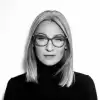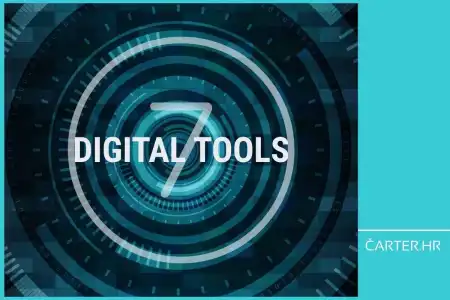
Today, digital transformation is more than a trend—it is the essence of survival and growth. However, success is not guaranteed, and many companies face the same recurring obstacles. What have we learnt from the challenges and opportunities that 2024 has brought? Andreja Fazlić presents 5 key lessons to help you adapt your business to the new era and use technology the right way. Ready for change? Find out how.
Digital transformation is a key concept for all companies that want to remain competitive and drive business growth. Over the years of working with clients from various industries, particularly during this one drawing to a close, I have witnessed numerous challenges and opportunities that this process brings. These situations have taught me important lessons about how this concept shapes the future of (your?) business.
If you want to learn how to better prepare for successful changes in business, keep reading.
Understanding digital transformation
Digital transformation is not just the adoption of new technologies; it involves a fundamental change in how a company operates and communicates with customers. In a previous article, I wrote about how as much as 70% of digital transformation projects fail to achieve their goals, and the main reason for failure often lies in internal resistance within organizations. This highlights the need for a cultural shift within companies, where people (customers and employees) become the central element of success.
Additionally, digitalisation and digital transformation are often used as synonyms, but they represent different concepts in the business world. Understanding the difference between these two terms is crucial for successfully implementing strategies that leverage modern technologies.

Digitalisation refers to the process of converting analog information into a digital format. This includes scanning paper documents, using software tools to automate simple tasks, or transitioning from physical to digital systems. Its goal is to improve efficiency and reduce costs, enabling you to manage data more quickly and easily.
For example, in healthcare, digitalisation may involve switching from paper medical records to electronic health records (EHR), which facilitates access to information and improves communication among healthcare professionals and institutions.
Digital transformation represents a broader concept that includes the integration of digital technologies into all aspects of business. It not only changes the way organisations operate but also how they deliver value to their customers. It requires a cultural shift within the organisation, customer orientation, and adaptation of business models to leverage new technologies.
For example, Amazon is a company that has undergone digital transformation; they digitised book sales and developed an entire ecosystem that includes cloud computing (AWS), streaming services (Prime Video), and personalised recommendations based on user data analysis.

5 key lessons from 2024
People are the key factor: Successful digital transformation requires the engagement of all employees, especially management structures. Companies that have successfully implemented changes understood the importance of educating and involving employees in the process. An example is Adobe, which implemented a training program for its employees to equip them to use new tools and technologies. The result of their efforts was increased productivity and employee satisfaction.
Lesson: Invest in education and the development of your employees' digital skills to ensure their engagement in the transformation process. Let them matter more to you than technology.
Focus on the customer: This year, I noticed that more companies are recognising the importance of focused and orchestrated efforts toward customers. Through analysing customer behaviour data, many companies have been able to adapt their products and services to better meet customer needs. For example, Netflix uses content recommendation algorithms based on what you have previously watched, increasing engagement and subscriber satisfaction.
Lesson: Regularly analyse user data so you can tailor your offerings to their needs.
Agility and adaptability: The ability to adapt quickly has become a defining trait of successful companies. Organisations that have implemented agile work methods, such as Scrum or Kanban, have been able to respond more quickly to changes in demand and the market. An example of this is Spotify, which uses an agile approach to develop its services and quickly adapt to user needs.
Lesson: Consider implementing agile work methods within your teams to improve flexibility and response speed to market changes.
Technology as a tool: Digital transformation should not be driven solely by technology; it must be aimed at achieving business goals. Technologies such as artificial intelligence and data analytics should be used as tools to improve operational efficiency and customer experience. For example, Amazon uses AI to optimise its supply chains, reducing costs and improving delivery speed.
Lesson: Explore ways to use technology as a tool to achieve your business goals rather than using it just as a trendy concept.
Culture of innovation: Companies that foster a culture of innovation have greater chances of success in general, especially in digital transformation. They are not afraid to experiment and learn from failures. Google is known for its culture of innovation, which allows employees to spend 20% of their work time on projects that interest them, leading to the development of products like Gmail.
Lesson: Encourage innovative thinking within your organisation by creating space for mistakes, experimentation, and creativity among employees.
Successful digital transformation requires engagement at all levels within the organisation and a focus on people (customers and employees) as the foundation of a growth strategy.
If you want to remain competitive and ensure the continued growth of your business, it is essential to invest in people, a culture of innovation, and technology—in that exact order—because there is no better year for growth and transformation than the upcoming 2025.
Categories of trends
- News
- Sale
- Marketing
- SEO
- Web design
- Social media
- Technology
- Regulations
- Management
- Education
- Finances
- User experience
Newsletter
Sign up for the newsletter and receive the latest trends and tips straight to your inbox




